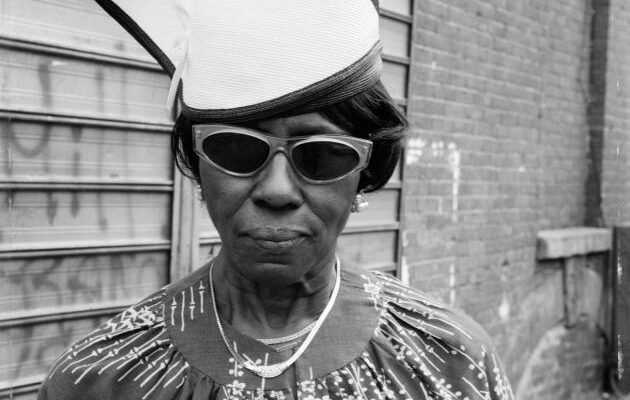In images, in picturesFrom 1988 to 1991, the photographer took instant portraits of African-Americans he met on the streets. Photos collected in a book, “Street Portraits”, and exhibited at the Whitney Museum in New York until October.
New York, 1969. A teenager visits an exhibition at the Metropolitan Museum of Art. For the first time in his life, he is faced with works of art depicting blacks. Men and women of the same skin color as him and everyone he meets every day in his neighborhood in Queens. He is too young to know that the exhibition, “Harlem on My Mind”, is causing a scandal, that no black artist is credited there and that activists, furious, are preparing to retort by tagging paintings from the collections of the Museum. He is content to look at these images of bodies which resemble him.
Fifty years later, the teenager has become a great photographer, Dawoud Bey. Some of his works are present in the permanent collection of the Met, as in many other American institutions. Since April 17, the Whitney Museum in New York has been devoting a major retrospective to him, and a book by Mack lists one of his strongest series, Street Portraits. Black and white photos taken between 1988 and 1991 in several cities in New York State and Washington, DC.
Dawoud Bey walked around the African-American neighborhoods of these cities and asked passers-by if he could photograph them. They may be of all ages, all styles, they all share the same pride in the look, as well as austerity. “People don’t walk around with a smile on their face, so why shoot smiling faces? I would tell them, “Don’t smile, relax.” I wanted there to be no nervousness, that the pose was never forced. “ From the classic portrait. Except that Dawoud Bey worked with Polaroid film. No sooner did he take a photograph than he gave a print to his ephemeral models. “A way to put them at ease, but also to give them something back. “
Let the model keep its image. Especially the black model. With this series, Dawoud Bey is part of a long history, that of the representation of African Americans in photography. The first images of blacks, in the 19th centurye century, were those of slaves in the plantations or servants in the beautiful New York residences. An image of savage, sometimes smiling, sometimes ferocious, that the nascent cinema will accentuate – including in the cartoon, the first Disney accumulating racist clichés.
The XXe century will be the ground for slow progress, that of the reappropriation by black artists of the image of their peers. Between artistic creation and concern to illustrate reality. The Harlem Renaissance movement in New York will make an impression, as will Gordon Parks’ reports in the magazine Life.
You have 52.72% of this article left to read. The rest is for subscribers only.
